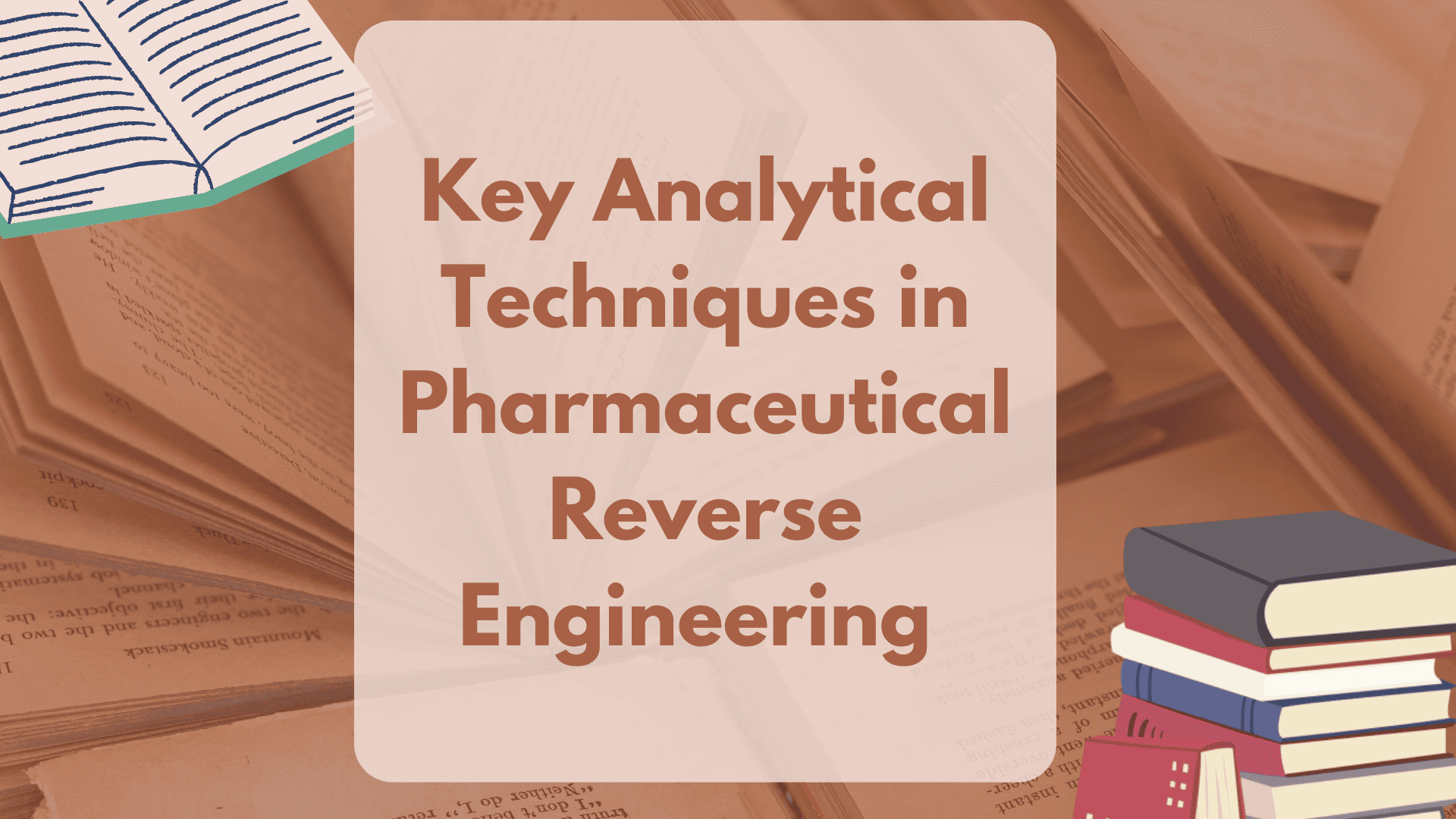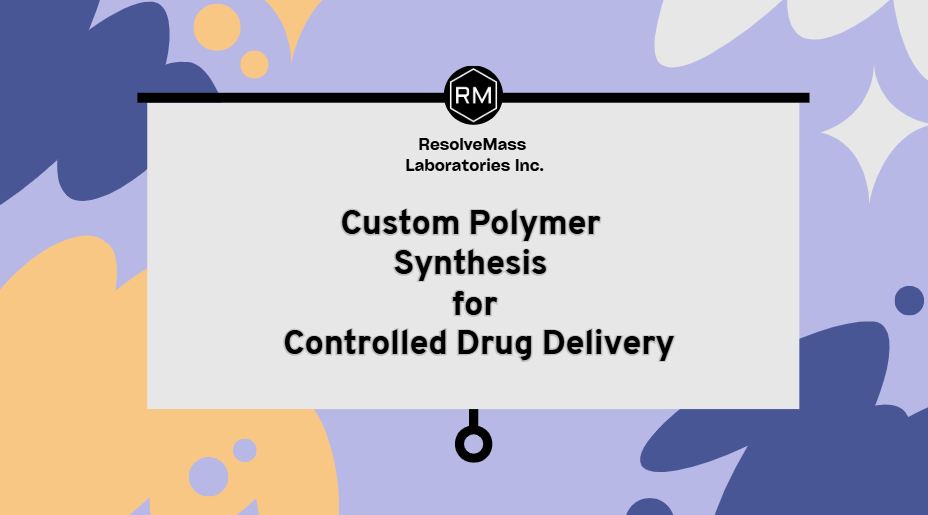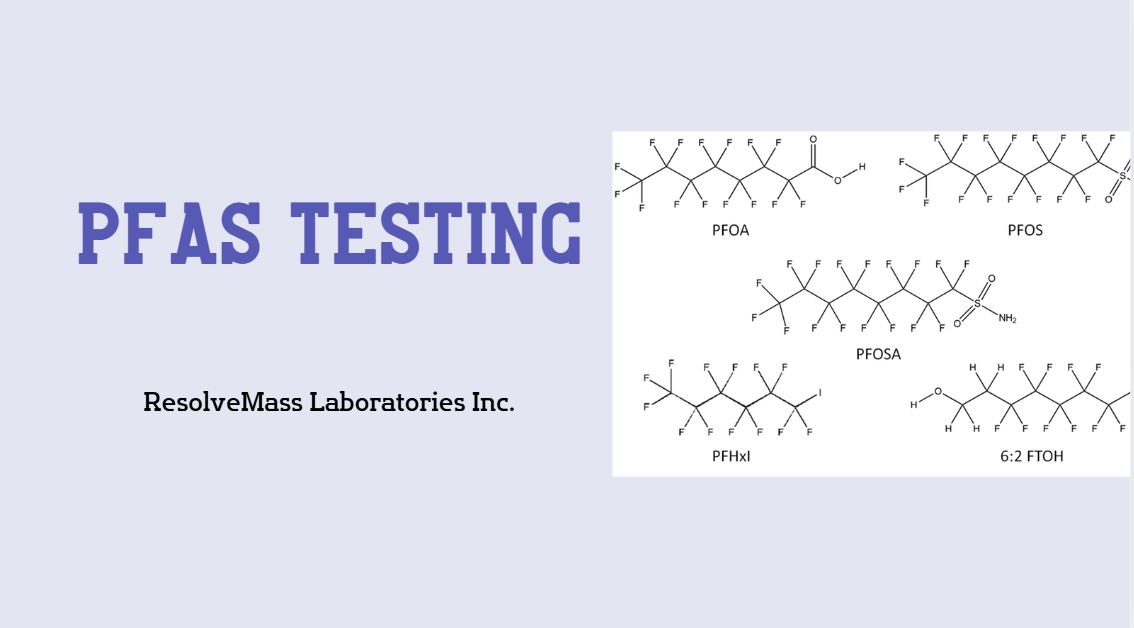Introduction
Pharmaceutical reverse engineering is a cornerstone of innovation in modern drug development, regulatory benchmarking, and product improvement. Analytical Techniques in Pharmaceutical Reverse Engineering are vital for identifying, characterizing, and quantifying the different components that make up complex drug formulations. At ResolveMass Laboratories Inc., we provide advanced deformulation and analytical services designed to ensure precision, compliance, and consistent product quality.
Our team of scientists uses state-of-the-art methodologies to uncover formulation blueprints — ranging from polymers and biopolymers to excipient characterization. These insights empower pharmaceutical companies to optimize R&D strategies, confirm bioequivalence, and improve formulation design. By combining advanced instruments with multi-level validation, we guarantee accuracy, reproducibility, and defensible scientific results.
👉 Learn more about our Reverse Engineering Study in Canada.
Summary of Key Insights
Pharmaceutical reverse engineering focuses on understanding both the chemical and physical properties of existing drug products. This approach enables companies to replicate or improve formulations with precision.
The most widely used analytical techniques in pharmaceutical reverse engineering include chromatography, spectroscopy, thermal analysis, microscopy, and mass spectrometry. Each of these provides unique molecular-level insights essential for deformulation and formulation enhancement.
At ResolveMass Laboratories, we use proprietary workflows with multi-technique validation to deliver high-quality results. Our case studies highlight proven success in polymer and biopolymer reverse engineering, demonstrating performance improvements and reproducibility.
1. What is Pharmaceutical Reverse Engineering?
Pharmaceutical reverse engineering is the scientific process of breaking down a drug formulation to identify its active pharmaceutical ingredients (APIs), excipients, and manufacturing methods. The main goal is to replicate or improve the reference listed drug (RLD) while ensuring therapeutic equivalence and compliance with regulatory standards.
This process not only supports innovation but also uncovers critical formulation attributes that impact stability, safety, and bioavailability. It plays a crucial role in patent evaluation, quality control, and competitor benchmarking.
At ResolveMass Laboratories, our Deformulation Analysis Services use advanced instrumentation and validated workflows to accurately identify and quantify each formulation component.
2. Importance of Analytical Techniques in Pharmaceutical Reverse Engineering
The success of pharmaceutical reverse engineering depends on the reliability of the analytical methods applied. These methods reveal molecular composition, detect impurities, analyze ratios of ingredients, and evaluate the stability of a drug product.
By delivering detailed compositional data, these techniques ensure that reformulated products perform consistently in terms of safety, stability, and efficacy. Our scientists use multi-technique validation, integrating complementary results to eliminate uncertainty and strengthen data reliability.
This rigorous approach allows pharmaceutical firms to base their R&D and intellectual property decisions on scientifically defensible results.
👉 Explore more in our Deformulation Analysis Services.
3. Chromatographic Techniques in Reverse Engineering
Chromatography is one of the most powerful analytical techniques in pharmaceutical reverse engineering, as it separates, detects, and quantifies each individual component within a formulation.
| Technique | Application | Example |
|---|---|---|
| HPLC (High-Performance Liquid Chromatography) | Separates APIs and excipients | Drug purity profiling |
| GC (Gas Chromatography) | Analyzes volatile compounds | Residual solvent detection |
| IC (Ion Chromatography) | Quantifies ionic impurities | Salt form analysis |
At ResolveMass, we customize chromatographic workflows to meet the needs of complex drug formulations. Our labs use advanced detectors and software to improve sensitivity and resolution, ensuring reproducibility and precision.
👉 See our Polymer Deformulation Characterization.
4. Spectroscopic Techniques in Pharmaceutical Reverse Engineering
Spectroscopy plays a central role in pharmaceutical deformulation by identifying molecular structures and functional group interactions.
- FTIR (Fourier Transform Infrared Spectroscopy): Identifies functional groups in polymers and organic compounds.
- UV-Vis Spectroscopy: Measures concentration and optical properties of APIs.
- Raman Spectroscopy: Provides non-destructive chemical fingerprinting.
- NMR (Nuclear Magnetic Resonance): Reveals molecular structure, bonding, and configuration.
At ResolveMass, our Reverse Engineering of RLD Drug Products integrates spectroscopy with chromatography for enhanced molecular verification, ensuring reliable material identification and purity assessment.
5. Thermal and Physical Characterization Techniques
Thermal analysis is essential for evaluating the stability, compatibility, and degradation behavior of pharmaceutical products.
- DSC (Differential Scanning Calorimetry): Measures melting, crystallization, and polymorphism.
- TGA (Thermogravimetric Analysis): Tracks weight loss and thermal decomposition.
- DMA (Dynamic Mechanical Analysis): Evaluates elasticity and strength of polymers.
These methods provide valuable insights into how a formulation will behave under stress conditions. At ResolveMass, thermal data is crucial for reformulation strategies and for ensuring storage stability.
👉 Learn more about our Polymer Reverse Engineering Services for Medical Devices.
6. Microscopy and Surface Analysis
Microscopy allows scientists to study morphology, particle size, and surface properties of pharmaceutical substances.
- SEM (Scanning Electron Microscopy): Provides detailed imaging of surface structures.
- AFM (Atomic Force Microscopy): Maps surfaces at the nanometer scale.
- EDS (Energy-Dispersive Spectroscopy): Identifies elemental composition.
By combining microscopy results with spectroscopy, we ensure multi-dimensional validation, which is critical for consistency in coatings, dispersion, and contamination control.
7. Mass Spectrometry in Pharmaceutical Reverse Engineering
Mass spectrometry (MS) is a cornerstone of drug deformulation, offering highly detailed molecular information.
- LC–MS (Liquid Chromatography–Mass Spectrometry): Detects impurities and complex mixtures.
- MALDI–TOF: Analyzes large biopolymers and proteins.
- GC–MS: Identifies volatile and semi-volatile compounds.
At ResolveMass, hybrid MS platforms provide unmatched molecular insights. When combined with chromatography, MS ensures precise deformulation and accurate impurity profiling.
8. X-Ray Diffraction (XRD) and Crystallography
XRD helps determine whether a substance is crystalline or amorphous, which directly impacts solubility and bioavailability.
At ResolveMass, XRD is combined with spectroscopy for solid-state characterization, enabling the detection of polymorphism and monitoring stability throughout formulation development.
9. Data Integration and Interpretation
Reverse engineering goes beyond data collection; it requires interpretation. At ResolveMass, we integrate data from chromatography, spectroscopy, and thermal analysis into a unified profile.
This approach minimizes uncertainty, enhances reproducibility, and provides clear guidance for reformulation and regulatory submissions.
10. Case Studies in Pharmaceutical Reverse Engineering
- Case Study 1: Polymer deformulation for sustained-release tablets.
- Case Study 2: Biopolymer identification in biodegradable capsules.
- Case Study 3: Excipient compatibility evaluation for generic formulations.
Each study demonstrates how combining multiple analytical techniques leads to actionable insights.
👉 Learn more in our Case Studies in Polymer Reverse Engineering.
Conclusion
In today’s competitive market, mastering analytical techniques in pharmaceutical reverse engineering is vital for innovation, regulatory compliance, and high-quality drug development. Using advanced chromatography, spectroscopy, microscopy, and thermal analysis, ResolveMass Laboratories delivers comprehensive deformulation insights to support product optimization.
Our combination of scientific rigor, validated instruments, and expert analysts ensures results that are accurate and reliable. This makes ResolveMass a trusted partner for companies aiming for excellence in pharmaceutical innovation.
👉 Explore our services:
Reverse Engineering Study in Canada | Polymer Deformulation Characterization | Deformulation Analysis Services
📞 Contact us today:
Contact page
FAQs on Analytical Techniques in Pharmaceutical Reverse Engineering
The main goal of pharmaceutical reverse engineering is to fully understand the formulation and manufacturing process of a reference drug. By identifying APIs, excipients, and critical attributes, companies can either replicate the product or design an improved version. This process ensures therapeutic equivalence while meeting regulatory and quality standards.
The most frequently used analytical techniques in pharmaceutical reverse engineering include HPLC, FTIR, GC–MS, NMR, and DSC. Each method provides unique insights into molecular composition, impurities, and stability. Together, they form a complete toolkit for deformulation and product improvement.
Chromatography is one of the most powerful tools in reverse engineering because it separates each ingredient within a complex formulation. It not only identifies APIs and excipients but also quantifies their ratios with precision. This makes it an essential technique for accurate replication and formulation redesign.
Spectroscopy is vital for identifying molecular structures and functional groups in pharmaceutical materials. Techniques such as FTIR, UV-Vis, and Raman provide chemical fingerprints that confirm the identity and integrity of drug components. This ensures product safety, quality, and consistency in formulation development.
Yes, reverse engineering is highly effective for polymer-based formulations, including medical devices and controlled-release systems. Techniques such as TGA, DSC, and FTIR help study polymer-drug interactions and thermal stability. These insights guide researchers in developing reliable, safe, and effective polymer-based drugs.
Thermal analysis provides information on how a formulation behaves under heat and stress conditions. By evaluating melting points, crystallization, degradation, and stability, scientists can refine material selection and improve product performance. This makes it a crucial step in ensuring consistent drug quality during reformulation.
Some common challenges include detecting trace-level impurities, analyzing complex excipient blends, and studying proprietary polymer structures. Overcoming these requires advanced instrumentation and multi-technique validation. At ResolveMass, we use an integrated approach to ensure accuracy and reduce analytical uncertainty.
At ResolveMass, results from chromatography, spectroscopy, microscopy, and thermal analysis are combined into a unified deformulation profile. This cross-validation approach minimizes errors and strengthens reproducibility. By integrating data, we provide clear, defensible results that support R&D, quality control, and regulatory submissions.
Yes, reverse engineering is legal when performed for innovation, bioequivalence studies, or product improvement within intellectual property boundaries. It is widely used by pharmaceutical companies to improve existing formulations while ensuring compliance with regulations. This makes it a safe and valuable practice for the industry.
References
- Venkatesh, A., Kaushik, A., Tammannavar, V., & Kathpalia, H. (2025). Analytical techniques for reverse engineering of reference products for the development of generic oral solid dosage forms. International Journal of Pharmaceutical Sciences and Drug Research, 17(1), 74–82. https://doi.org/10.25004/IJPSDR.2025.170111
- Rathore, C., Patel, K., Gajjar, K., & Patel, K. (2022). An overview of abuse-deterrent formulations: Approaches and challenges. Journal of Young Pharmacists, 14(3), 255–263. https://doi.org/10.5530/jyp.2022.14.38
- Kowtharapu, L. P., Katari, N. K., Sandoval, C. A., Konduru, N., Muchakayala, S. K., Pydimarry, S. P. R., & Jonnalagadda, S. B. (2023). Regulatory perspective reverse engineering analysis of the mast cell stabilizer and the histamine receptor antagonist (Olopatadine HCl): Instrumental and classical methods for multiple formulations. ACS Omega, 8(24), 21485–21492. https://doi.org/10.1021/acsomega.3c00311


